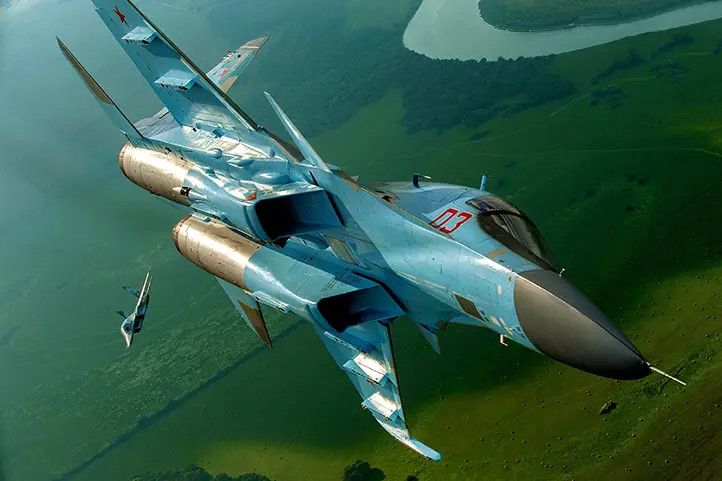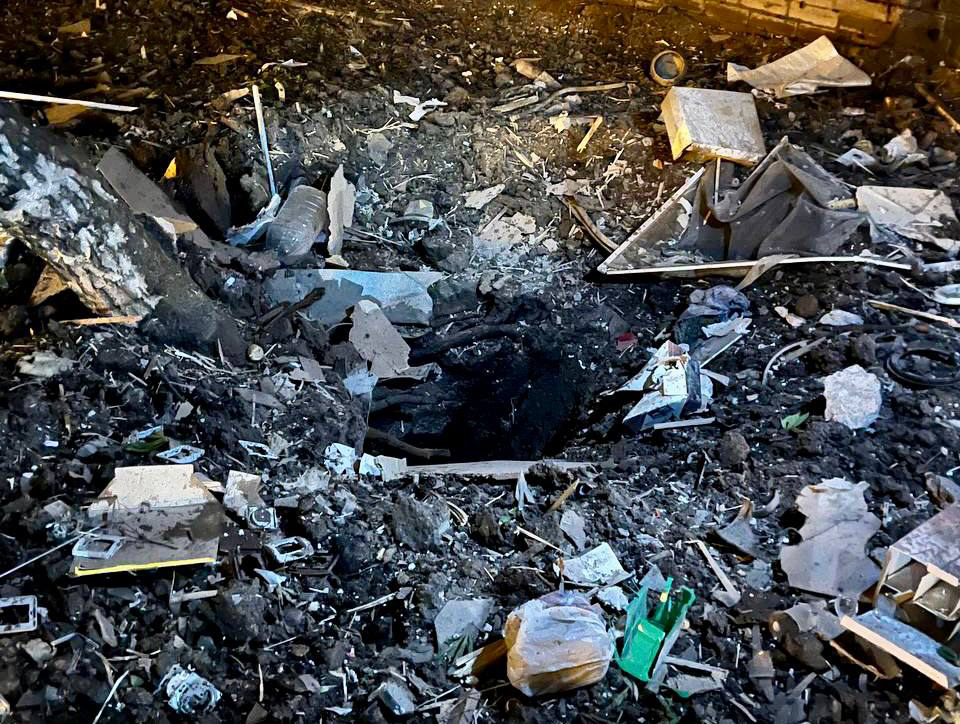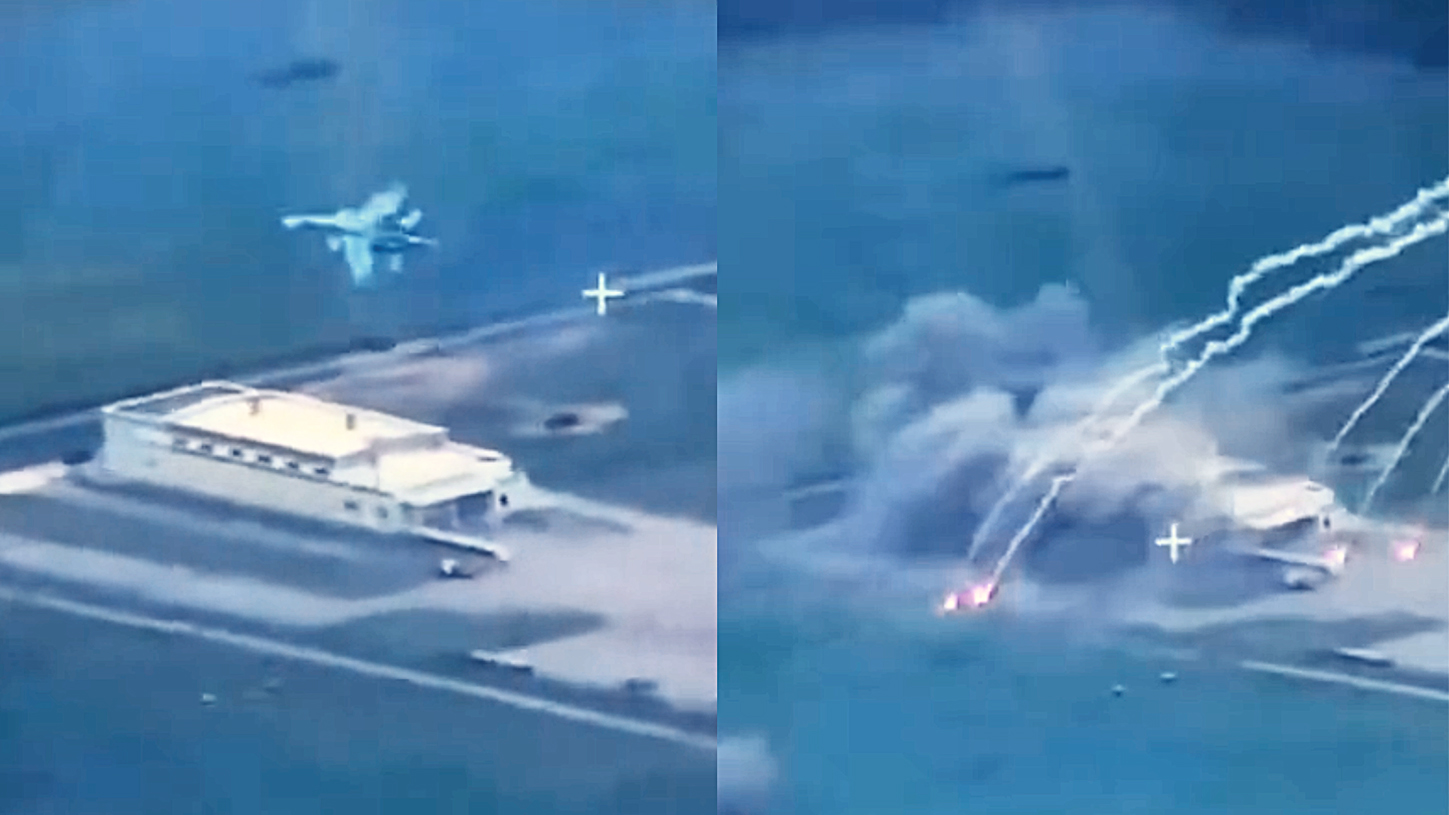A remarkable video has emerged showing a pair of Russian Su-34 Fullback fighter-bombers dropping a load of high-explosive bombs from a very low level against a target within the Russian Federation, on the border with Ukraine. The bombs appear to miss their target, reflecting the difficulties of delivering unguided weaponry of this kind at a very low altitude and in the heat of battle, as well as the desperate measures that were taken by the Russian military to counter an armed incursion into its own territory.
The Su-34s were dropping their bombs on partisan forces at the Grayvoron border checkpoint in the Belgorod region earlier in the week. While the settlement of the Grayvoron is located around six miles inside Russia, the associated checkpoint is right on the border with Ukraine. The Belgorod region as a whole shares a roughly 340-mile border with Ukraine.

The weapons being dropped by the Su-34s appear to be from the FAB-500Sh series. These 1,100-pound weapons are high-explosive freefall bombs that are specially adapted for dropping at a very low level. While the basic FAB-500Sh is intended for dropping from an altitude of around 500 feet, the FAB-500ShN can be delivered from even lower — down to an altitude of just 100 feet. These types of bombs are fitted with drag chutes, which deploy just after being dropped, and they also have special time delay fuzes. Both features allow dropping aircraft to safely get beyond the blast radius before detonation. You can see both of them in action in the clip.
Other differences with these weapons include thicker body walls to allow for deeper penetration or thinner ones for maximum fragmentation effect.
As well as the bombs, there are more pyrotechnics in the form of infrared decoy flares pumped out by the Su-34s as they drop their weapons. These are used to defend against heat-seeking missiles, in particular man-portable air defense systems (MANPADS). There are suggestions that weapons of this kind might even have been used to bring down four Russian aircraft over Bryansk Oblast, another Russian border region, earlier this month, although other claims as to the weapon system behind those attacks are prevalent. You can read more about these incidents in our coverage here.

The Su-34, meanwhile, has been one of the workhorses of the Russian Aerospace Forces during the full-scale invasion of Ukraine.

Based on open-source intelligence, at least 20 examples of the Su-34 have been destroyed by a combination of enemy action and non-combat-related accidents since the full-scale invasion began, reflecting the heavy use of the type, as well as the highly contested airspace over much of Ukraine.

While the Su-34 is able to carry a wide range of guided munitions, some of them offering significant standoff range, the aircraft has frequently been noted carrying ‘dumb’ ordnance on many of its sorties in the Ukraine war. As we have discussed in the past, this speaks to both the rigidity of Russian tactics as well as the limited stocks of more advanced (and expensive) precision-guided munitions.
Although the Su-34 has frequently been noted over Ukraine, this is apparently the first time that we’ve seen it attacking targets within Russia, at least deliberately. In one incident last month, a Su-34 dropped a bomb or other type of offensive weapon on the city of Belgorod, apparently by accident. The weapon caused an explosion and damaged several buildings, and you can read more about it here.

As to what’s happening currently in the Belgorod region, earlier this week, two self-proclaimed anti-Putin Russian partisan groups supporting Ukraine claimed they had carried out attacks there, “liberating” the settlement of Kozinka about a mile across the border and entering Grayvoron — apparently the scene of the above video.
Previously, the officials in the region blamed attacks of this kind — which date back to at least March — on the Ukrainian Armed Forces. Now, as their complexity and overtness grow, they are increasingly being described as “terrorist” acts, with “counter-terrorist security measures” being taken as a result.
The two partisan groups refer to themselves as the Freedom of Russia Legion and the Russian Volunteer Corps (RDK), who have reportedly attempted to create what’s described as “a demilitarized zone” as part of efforts to “move towards the liberation of all of Russia.” The groups claimed victory in their incursion operation while Russia says they were slaughtered.
The governor of Belgorod Oblast, Vyacheslav Gladkov, earlier this week described elements of Russia’s security forces engaged in fighting in the region as part of a defense against a cross-border incursion.
Gladkov said the incursion was being made by “a sabotage and reconnaissance group of the Armed Forces of Ukraine,” which had “entered the territory of the Grayvoron district.”
This position is refuted by Ukrainian accounts, which instead claim that these operations are being carried out exclusively by Russian citizens. Either way, it means it’s very hard to identify the forces that the Su-34s were attempting to target.
Belgorod’s regional governor has said that elements of the Armed Forces of the Russian Federation, the border service, the National Guard, and the FSB have all been involved in repelling the incursion. You can see strikes on the same border installation in the Russian briefing from earlier this week posted below.
As well as armored vehicles, Russian authorities earlier this week said that helicopters were used to assist in the response to the “terrorist” threat, although the use of fixed-wing airpower was not previously announced.
However, with no signs that the activities by the partisans, saboteurs, or other anti-Putin elements within Belgorod Oblast will let up, there is every chance that we will see further deployments of Russian combat aircraft in an offensive capacity within the country’s own borders.
Contact the author: thomas@thewarzone.com

